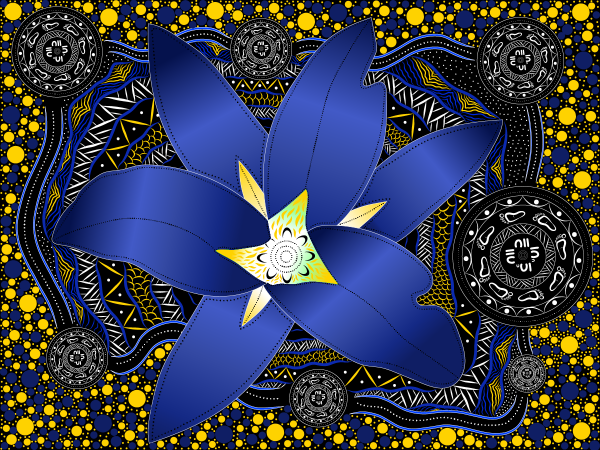The Ngunnawal Bluebell
Cancer Council ACT is proud to be joining the Reconciliation Action Plan program and, in doing so, making a formal commitment to advance reconciliation with Aboriginal and Torres Strait Islander communities.
As we take the first steps in our formal reconciliation journey, Cancer Council ACT has worked with renowned Ngunnawal artist Richard Allan to commission a custom artwork symbolising our values.

About the artwork
The painting features a depiction of the native bluebell flower at its centre – a symbolic flower found on Ngunnawal land. The beauty of the flower symbolises the hope we bring, and the care that we give to each other in challenging times, and to people who are suffering due to cancer.
Surrounding the flower are seven circles representing the seven clans within Ngunnawal Country. The clans are joined as they connect with each other and with the beautiful land, creating a journey and forming the circle of life, which is vital in Ngunnawal culture.
The yellow and blue dots gathered around the circle of life signify people and families that always have been and always will be on Ngunnawal Country, the Ngunnawal people, and everyone from the Elders to those who live among the Ngunnawal people today, the Canberrans. The dots also represent the diverse and inclusive Cancer Council ACT community. All of us are going to be affected by cancer in our lifetime, as a supporter, a loved one, or going through our own cancer journey. Cancer is personal but it’s all of us against cancer.
The patterns that lead into the flower represent the life of the Ngunnawal people and their livelihoods over the centuries. The wavy blue and yellow patterns symbolise the two important elements the Ngunnawal people needed to survive: the land and the water.
The white crossing patterns depict the fish nets that were woven by women using lomandra mat rushes to provide food, while the yellow lines and white dots illustrate the Ngunnawal tracking system, and the fish scales illustrate the fishing technique combined with the yellow wattle. These methods and practices allowed the traditional owners to take only what they need from the land and the water.